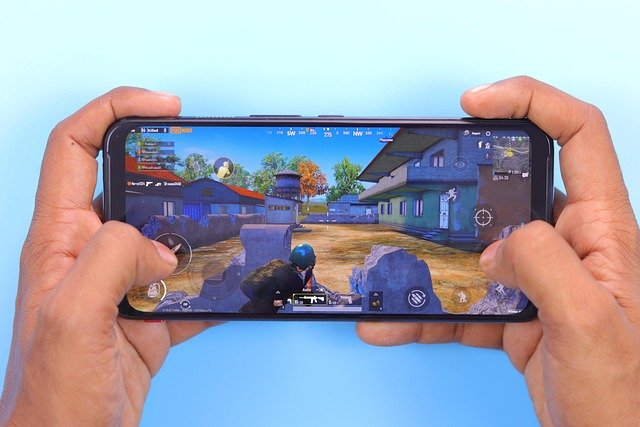Adapting Content for Mobile-First Audiences
Mobile-first players expect fast onboarding, clear usability, and content that fits short sessions. This article outlines practical approaches to improve discovery, retention, monetization, and community-building for mobile experiences without sacrificing privacy or performance.

Mobile-first audiences interact with games differently than desktop users: sessions are shorter, context varies, and discovery often happens through app stores, social links, or streaming highlights. Designing content for mobile-first players requires attention to onboarding flows, usability, localized messaging, and privacy safeguards, while also enabling analytics-driven refinement. Below are focused areas to optimize for modern mobile play and how they connect to retention, monetization, and community growth.
How does mobile usability affect player onboarding?
A streamlined onboarding reduces friction and helps players reach meaningful gameplay moments fast. Use progressive disclosure: introduce core mechanics in the first 30–60 seconds, then reveal advanced features gradually. Touch targets, font sizes, and screen rhythms must be tuned for one-handed use and varying screen sizes. Consider contextual tooltips and optional video snippets for feature learning rather than lengthy modal text.
Test onboarding via usability studies and analytics events tied to key milestones (first win, first match, first currency earned). Measuring drop-off across these events reveals specific UX bottlenecks. Onboarding that respects time and cognitive load increases first-session engagement and sets the stage for better retention.
What drives retention and engagement on mobile?
Retention on mobile often hinges on consistent, bite-sized value: daily challenges, short multiplayer matches, or content that fits commute and break times. Personalization can raise engagement by surfacing relevant events, friends’ activity, or skill-appropriate matchmaking. Use modular content loops that reward short play but connect to longer-term progression systems to give players reasons to return.
Social hooks amplify retention: leaderboards, clan systems, and simple multiplayer modes that support quick matches create recurring reasons to open the app. Balance persistence and convenience—players should be able to make steady progress without committing long play sessions every time.
How can monetization and privacy coexist?
Effective mobile monetization respects player trust and privacy. Offer clear, value-focused monetization like optional cosmetics, season passes, or convenience purchases that do not gate basic play behind paywalls. Design monetization flows with transparent information on what is purchased and how data is used.
Privacy-conscious data handling—minimal collection, clear opt-ins, and local controls—reduces regulatory risk and preserves long-term player trust. Avoid dark patterns; monetization that feels fair and transparent tends to sustain engagement and generate repeat purchases rather than short-term spikes.
Why is localization important for discovery?
Localization goes beyond text translation: adapt UI layouts, voiceover or subtitle timing, cultural references, and monetization messaging to local norms. Proper localization improves store listing conversion, in-game comprehension, and community formation in different regions, directly aiding discovery and organic growth.
Combine localization with targeted store creatives and metadata so players searching in their language or region encounter relevant descriptions and visuals. Small investments in culturally aware content typically yield outsized improvements in both install rates and early retention.
How can multiplayer and community features improve retention?
Multiplayer features that support quick matchmaking and social persistence encourage players to return and invite friends. Modes designed for short sessions (asynchronous PvP, quick co-op objectives) suit mobile rhythms better than long matches. Community features—chat filtering, guilds, event calendars—help form social bonds that increase retention and lifetime value.
Moderation and usability are essential: easy reporting, clear rules, and onboarding to community norms reduce friction and make group play more welcoming. Community-driven content discovery, like player-created events or streaming highlights, can also drive renewed interest.
What role do analytics and streaming play in growth?
Analytics provide the evidence to prioritize improvements: cohort retention, funnel drop-offs, ARPU segmentation, and heatmaps of touch interaction reveal what to iterate. Use A/B testing for onboarding tweaks, monetization offers, and UI changes to validate impact before wide rollout.
Streaming and social clips broaden discovery by showcasing gameplay in digestible formats. Integrate simple capture and sharing tools to let players broadcast moments directly to social platforms or messaging apps. Monitor analytics on shared content to understand which moments drive installs or re-engagement and refine content accordingly.
Conclusion
Adapting content for mobile-first audiences means designing with short sessions, touch-based usability, and regional nuance in mind. Prioritize smooth onboarding, privacy-respecting monetization, and social features that fit mobile behavior. Use analytics and streaming-friendly features to measure and amplify what works, and continue iterating based on player signals to sustain discovery, engagement, and retention.





